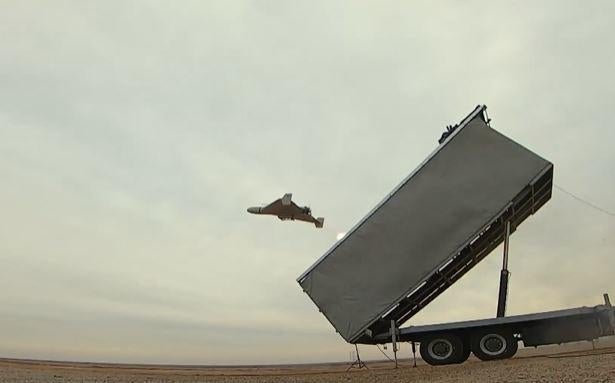Ukraine’s defense industry is urging the West to abandon its longtime fixation on sleek, expensive weaponry in favor of cheaper, mass-produced arms, the kind needed to survive and win a grinding war of attrition against Russia.
Serhiy Goncharov, the CEO of the National Association of Ukrainian Defense Industries — which represents around 100 Ukrainian companies — told Business Insider that the West’s longstanding focus on fielding limited numbers of cutting-edge systems could be a serious disadvantage in a protracted conflict. Those systems are good to have, but mass is key.
An argument for mass
The war in Ukraine shows you don’t need a handful of ultra-precise, expensive weapons, Goncharov told BI. You need a massive supply of good enough firepower.
He said that the expensive weapons like the US military’s M982 Excalibur guided munition (each shell costs $100,000) “don’t work” when the other side has electronic warfare systems and the kind of traditional artillery rounds that are 30 times cheaper.
US Marine Corps/Cpl. Jeff Drew
Goncharov pointed to the M107, a self-propelled gun that was first fielded by the US in the 1960s, as an example of inexpensive firepower that can be effective in large numbers.
“You don’t need 10 Archers from the Swedish that are probably one of the best artillery systems in the world,” he said, referring to the artillery system made by BAE Systems that was given to Ukraine by Sweden. Instead, you need 200 cheap howitzers like the Bohdana one that Ukraine makes.
The “enormous rate of damage,” the significant rate of ammo and equipment attrition, in a fight like this means you need a constant supply of weaponry to keep fighting, especially when there isn’t any guarantee the high-end weapons will be the game changers promised.
Russia’s grinding attritional warfare
Russia’s invasion of Ukraine has been one marked by extensive use of artillery and tremendous ammunition expenditure. The war in some ways resembes the huge, destructive battles of World War I and World War II, with high casualties and substantial equipment losses.
Russia has one of the world’s largest militaries backed by a large population. The country has repeatedly demonstrated a willingness to pursue an attritional style of warfare, committing a lot of troops and weaponry to a fight to slowly wear down its foe.
Russia’s invasion has chewed through equipment. The UK Ministry of Defense said in December that Russia had lost over 3,600 main battle tanks and almost 8,000 armored vehicles since the full-scale invasion began in February 2022.
Yan Dobronosov/Global Images Ukraine via Getty Images
The Russians have the mass to absorb those losses. Ukraine has struggled with weapon and ammo shortages, as well as deficiencies in manpower. Ukraine turned to small, cheap drones as an asymmetric warfare alternative; Russia has employed uncrewed systems in battle as well.
China, another concern in the West, has built a similar kind of force, one with the mass to take losses.
The West, on the other hand, has spent the last two decades and change fighting lower-level adversaries where its forces can win the day with superior capabilities.
European and NATO are waking up
Goncharov’s warning is one that has been echoed by other Western defense officials and companies.
Countries have been keen to learn lessons about fighting Russia from the conflict in Ukraine, particularly in Europe, where many countries warn Russia could pursue further aggression in the future and defense spending is growing rapidly.
Gabrielius Landsbergis, the former defense minister of Lithuania, a NATO ally bordering Russia, previously described the war to Business Insider as one of “high quantities.”
He said that while the West has largely focused on new and expensive weaponry that takes a long time to manufacture, Russia has been “building something that’s cheap, that’s expendable, that’s fast.”
He said the West has “been preparing for a different kind of war” than what it would face in one against Russia, focusing on impressive equipment that is “very expensive.”
AP Photo/Alex Babenko
Troels Lund Poulsen, the Danish defense minister, previously told BI that “one of the lessons” from Ukraine is that the West needs far greater quantities of inexpensive weaponry to meet the threats posed by Russia and China.
Related stories

Business Insider tells the innovative stories you want to know

Business Insider tells the innovative stories you want to know
The head of NATO, Mark Rutte, urged countries to take similar learnings earlier this year, saying the alliance is too slow at developing weapons. He said the alliance works toward perfect, “but it doesn’t have to be perfect.”
He said that Ukraine will go ahead with equipment that is a “six to seven” out of 10, while NATO militaries insist on reaching “nine or 10.”
He said it wasn’t about getting rid of the expensive weaponry completely, but about finding a balance. It’s about “getting speed and enough quality done in the right conjunction.”
That’s something warfare experts have also told BI.
Michael O’Hanlon, a senior fellow and the director of research in the foreign-policy program at the Brookings Institution, said the West’s approach needs to change. The American military, for instance, is far more used to wars where “the whole point is you’re not going to be slogging it out for months and years on end.”
But he also said that doesn’t mean the West needs to completely abandon the development of advanced systems. “Those things have not become unimportant just because we realized that other things are also important,” he said.
The UK’s armed forces minister also warned last month that the war showed the West needs to change how it procures weaponry. Luke Pollard said Ukraine’s fight showed NATO “the way we have run our militaries, the way we have run our defense, is outdated.”
REUTERS/Viacheslav Ratynskyi
He said NATO militaries “build and procure really expensive high-end bits of kit. And it will take you five, 10 years: five years to run a procurement challenge, another 10 years to build it.”
Industry has taken note, too.
Kuldar Väärsi, the CEO of Milrem Robotics, an autonomous unmanned ground vehicle company in NATO ally Estonia, told BI in May that “we need to learn from Ukraine, and we need to get more pragmatic about what kind of equipment we buy.”
He said Europe needs to learn that “having a hundred more simple pieces of equipment is better than having 10 very sophisticated pieces of equipment.”
He said countries need to start buying less-sophisticated pieces of weaponry en masse so industry can adjust. “Industry has to manufacture what the customer is buying. And if the customer is still buying only a few very sophisticated items, then the industry just aligns with that.” And the reality is that may not work.






![The father (in the blue shirt) of Irfan, one of the flight crew killed when the Air India plane crashed, at the hospital [ Marhaba Halili/Al Jazeera]](https://koala-by.com/wp-content/uploads/2025/06/WhatsApp-Image-2025-06-13-at-12.35.03-AM-1749795965.jpeg)
